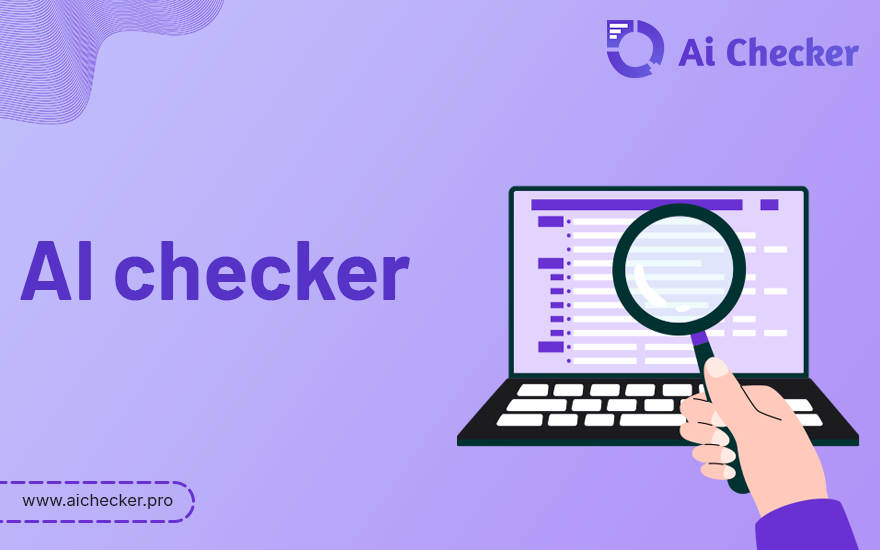The rapid rise of AI-powered writing tools has transformed how we produce digital content. From essays and blogs to marketing copy and product descriptions, AI can generate text in seconds. However, this ease of creation has led to concerns about authenticity and originality. To address this, AI detector tools have become essential for educators, marketers, and businesses aiming to verify if the content was written by a human or a machine.
This article dives deep into how AI detectors work, their core features, benefits, and how you can use them effectively to maintain content integrity.
What is an AI Detector?
An AI detector is a specialized software tool designed to identify whether a piece of text was created by a human or generated by artificial intelligence models like ChatGPT, GPT-4, Jasper, or Claude. These tools analyze specific patterns in the writing, including predictability, sentence structure, and probability scores, to determine if the content matches AI-generated tendencies.
AI detectors are widely used in academia, corporate settings, publishing, and digital marketing to ensure originality and maintain trust in written communication.
How Does an AI Detector Work?
AI detectors function through sophisticated algorithms that assess linguistic characteristics and patterns. Here’s a simplified breakdown of the process:
Step 1: Enter the Text
Users begin by pasting the content they want to analyze into the AI detection platform. Most detectors allow you to check various content types, such as blogs, essays, emails, or social media captions.
Step 2: Detect the AI Content
Once the text is uploaded, the tool’s algorithm examines features like word predictability, complexity, and sentence variation. It compares these metrics against databases of AI-generated content, highlighting areas where the writing appears machine-like.
Step 3: Get the Results
In just seconds, the detector produces a report indicating whether the content is human-written, AI-generated, or a mix of both. Some advanced tools even provide detailed scoring and analysis, pinpointing which sections may have been AI-created and offering recommendations for revision.
Features of AI Text Checker
Modern AI detectors come equipped with a variety of advanced features designed to ensure accuracy and usability:
- Probability Scoring: Offers percentage-based likelihood that text was generated by AI.
- Highlighting AI Sections: Marks specific phrases or sentences suspected of being machine-generated.
- Cross-Model Detection: Detects content from multiple AI models such as OpenAI’s GPT, Google Gemini, and Anthropic’s Claude.
- Bulk Content Analysis: Allows users to upload and check multiple documents simultaneously.
- Plagiarism Integration: Some tools combine AI detection with plagiarism checking for comprehensive content verification.
- Multi-Language Support: Identifies AI-generated text in various languages, beneficial for global users.
- Detailed Reports: Provides downloadable reports for record-keeping, useful for teachers, publishers, and content auditors.
Benefits of an AI Detector
The use of AI detectors provides significant advantages across different industries and user needs:
- Ensures Academic Integrity: Educators can quickly identify AI-written assignments, preserving honesty in student work.
- Protects Brand Authenticity: Marketers and businesses can maintain trust by ensuring their published content feels human and original.
- Saves Time on Manual Reviews: Automates the process of verifying content authenticity, allowing for quick decision-making.
- Supports Compliance Standards: Many industries require transparency in content creation, and detectors help meet these regulations.
- Reduces Legal Risks: Avoids potential copyright and authenticity disputes by verifying the originality of submitted content.
- Improves Content Quality: By detecting overly robotic text, creators can humanize and refine their writing to better engage audiences.
Why AI Detection is Becoming Essential
With AI technology advancing rapidly, distinguishing human content from machine-generated text is becoming more challenging. Search engines, academic institutions, and corporate organizations are increasingly implementing AI content policies to maintain transparency and uphold quality standards. AI detectors serve as the frontline defense against misrepresentation and misuse of AI-generated content, making them indispensable in today’s digital ecosystem.
Conclusion
AI checker has emerged as a vital tool in a world where artificial intelligence-driven content creation is widespread. By leveraging these tools, individuals and organizations can verify authenticity, build trust, and maintain credibility in their written communication. Whether you’re an educator ensuring student integrity, a marketer safeguarding brand reputation, or a publisher maintaining editorial standards, AI detectors provide the clarity and reliability needed to navigate the age of intelligent automation.
FAQs
1. Can AI detectors identify content from all AI models?
Most advanced detectors can identify text from popular AI models like GPT-4, Claude, and Gemini, but accuracy may vary across platforms.
2. Are AI detectors 100% accurate?
While highly reliable, no detector guarantees perfect accuracy due to constant AI evolution. Combining multiple tools often yields the best results.
3. Do AI detectors also check for plagiarism?
Some tools include plagiarism checking, but their primary function is identifying machine-generated patterns, not content duplication.
4. Are AI detectors free to use?
Many platforms offer free versions with basic features, while premium plans provide in-depth analysis and bulk document processing.
5. Why should businesses care about AI detection?
Ensuring content authenticity boosts brand credibility, SEO rankings, and customer trust, crucial factors for sustainable growth online.

